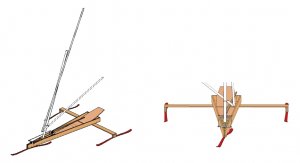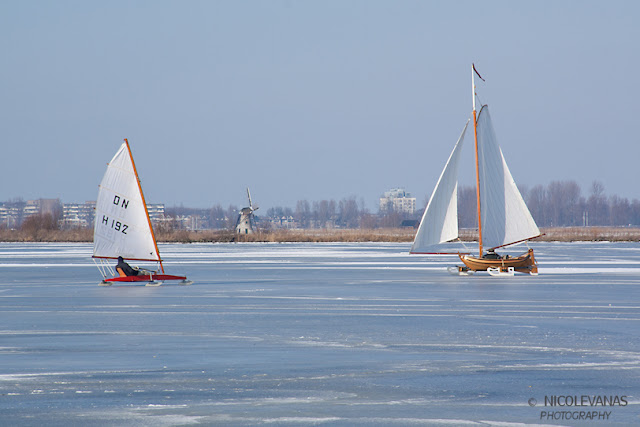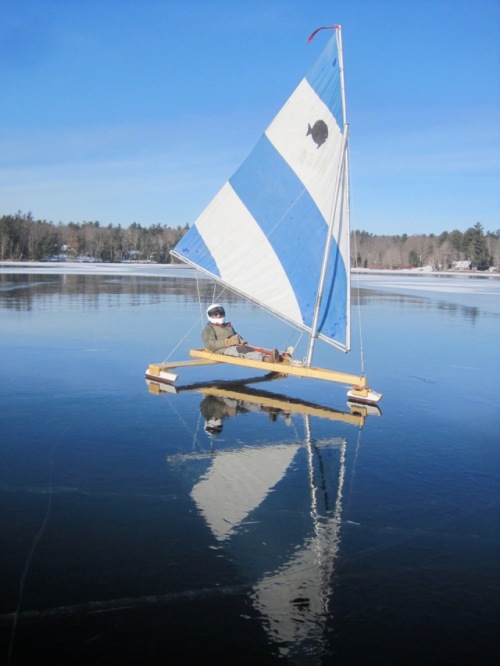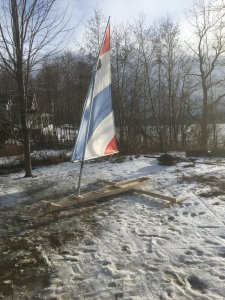The bay I sail on freezes in the winter. The surface however never completely clears of snow. The lake that feeds the bay also changes levels - developing layers of ice. Simply, we don’t get good ice. I wanted to create ‘snowboat’ (not sure if thats a word  ) that uses runners that ride on top of the snow, instead of blade-like runners that cut through the ice. The boat is based around my Sunfish rig.
) that uses runners that ride on top of the snow, instead of blade-like runners that cut through the ice. The boat is based around my Sunfish rig.
The steering runner is misleading in the picture. This ski will be a lot shorter to decrease the torque required to turn. Other things that aren’t in CAD are the fore and side stay, and the main sheet path.
The steering mechanism is reversed in the drawing, but I think I can fix that easily by changing the push-rods to cables, and cross them.
Has anybody built a snowboat before? Have any ideas what the runners should be made of?
 ) that uses runners that ride on top of the snow, instead of blade-like runners that cut through the ice. The boat is based around my Sunfish rig.
) that uses runners that ride on top of the snow, instead of blade-like runners that cut through the ice. The boat is based around my Sunfish rig. The steering runner is misleading in the picture. This ski will be a lot shorter to decrease the torque required to turn. Other things that aren’t in CAD are the fore and side stay, and the main sheet path.
The steering mechanism is reversed in the drawing, but I think I can fix that easily by changing the push-rods to cables, and cross them.
Has anybody built a snowboat before? Have any ideas what the runners should be made of?



 .
.


 ... yes, I know the sail is too high and the ski in the front was only a temporary experiment)
... yes, I know the sail is too high and the ski in the front was only a temporary experiment)